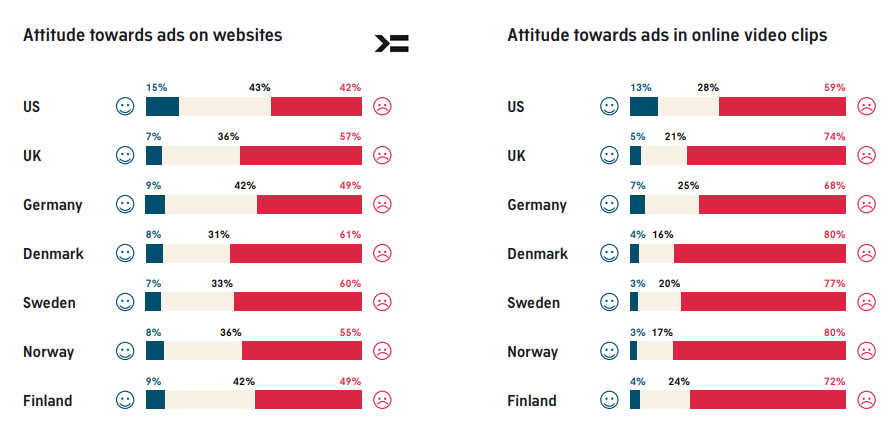Insights 2018: Attitude Towards Advertising and Use of Ad Blocking | AudienceProject
Consumer Behavior | Finland
People don’t like ads. And especially, they don’t like ads in online video clips. So, ad blocking seems to be a big problem for the digital industry. Furthermore, advertisers are challenging to reduce this phenomenon but they’re trying by delivering relevant ads, understanding audiences and improving the ad experience. Advertisers also are eager to collect data about ad blockers and their users.
Take a chill pill and read the below points to gain insights into the attitude towards advertising and the use of ad blocking across 7 countries (the US, the UK, Germany, Denmark, Sweden, Norway & Finland):
Attitude Towards Online Advertising
- The vast majority of internet users have a general disliking of both website ads and online video ads. Respondents in Denmark show the highest rates reached 61% for ads on websites, and 80% for ads on video clips.
- In general, older internet users are more likely to be annoyed with ads on websites, while both young and old users are very annoyed with ads in online video clips.
- In terms of the effect on brand perception, most of the internet indicated that ads would affect brand perception in a positive way if ads are shown next to relevant content.
- In contrast, ads would affect brand perception in a negative way if ads are shown in a non-brand safe environment.
The Use of Ad Blocking
- 60% of all internet users, surveyed, reported that they use an ad blocker.
- Ad blocking most widely used in Germany (49%), the UK (41%), the US (39%), Sweden (34%) and Norway (32%).
- There is a clear correlation between attitude towards advertising and use of ad blocking as internet users with negative towards ads are more likely to use ad blockers.
- Males are more likely than females to use ad blockers across all surveyed countries. It is the same also among younger generations versus older generations.

Two Figures Show the Attitude Towards Ads on Websites and Ads in Online Video Clips Across 7 Countries – 2018
Methodology:
Data were driven from over 16.000 individuals in the US, the UK, Germany, Denmark, Sweden, Norway and Finland. The survey conducted online in Q2 2018.







